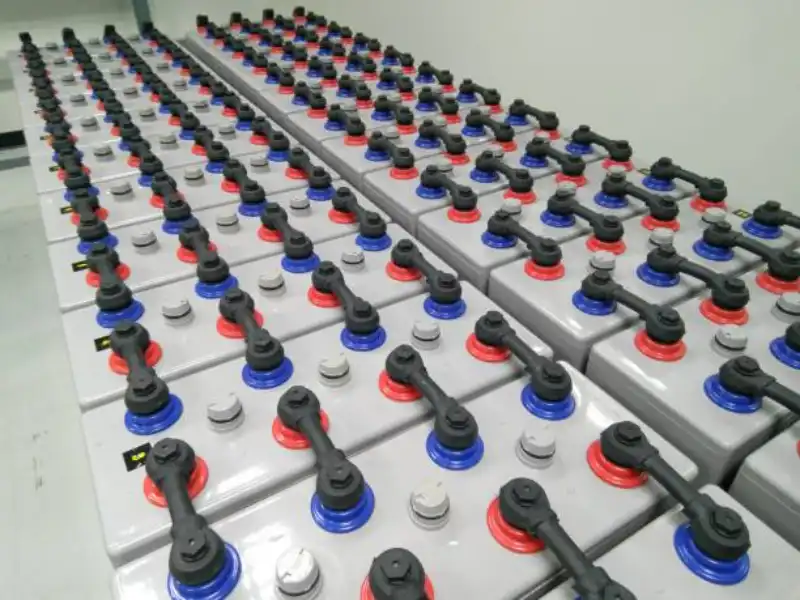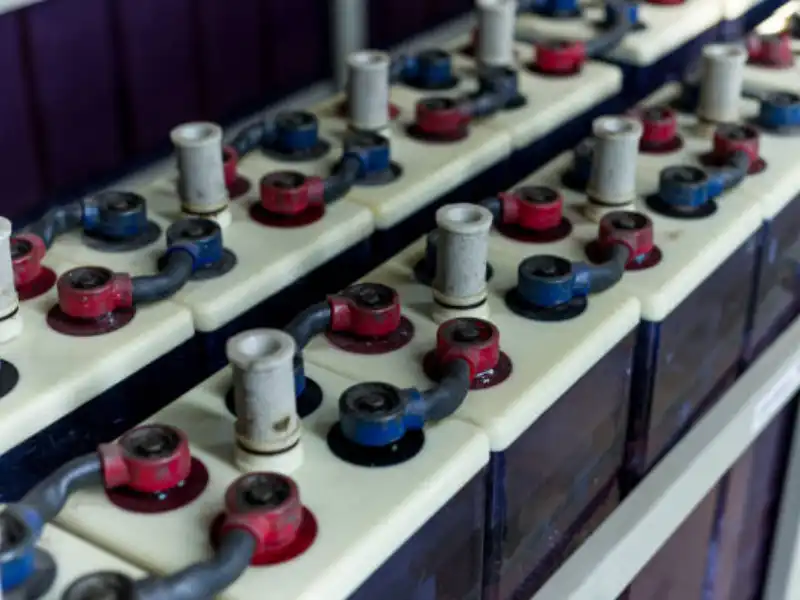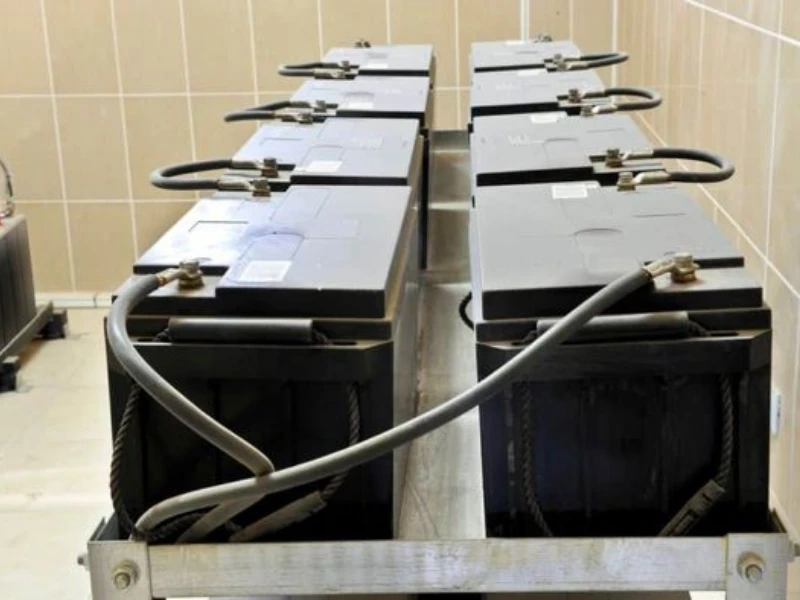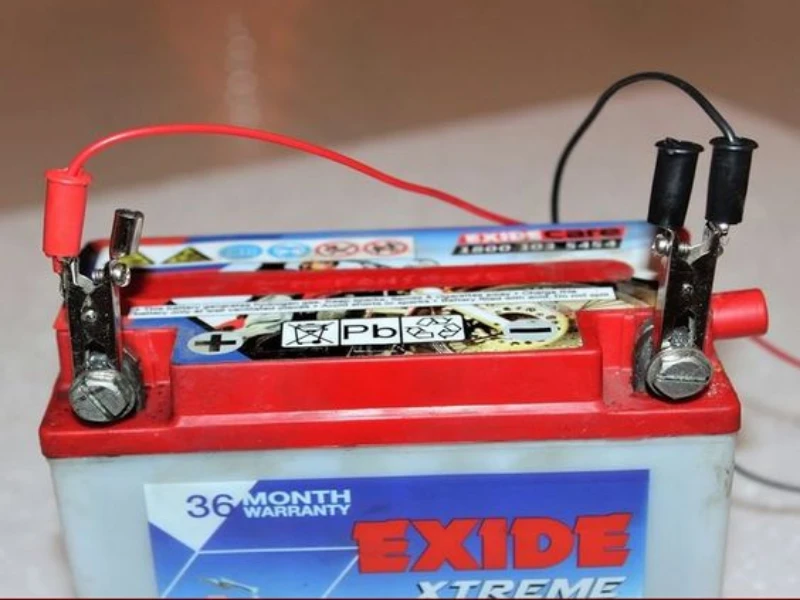Introduction
Connecting batteries in parallel is a common technique used to increase the total capacity and runtime of a battery system while maintaining the original voltage. This configuration involves connecting the positive terminals of multiple batteries together and the negative terminals together. When done properly, wiring batteries in parallel can provide longer runtimes and more capacity without additional complexity, ultimately increasing the total available energy. However, there are also risks associated with parallel battery connections that need to be understood. Improper wiring can lead to dangerous situations. By taking key precautions and understanding safe wiring techniques, the advantages of parallel battery banks can be realized safely.

What is Wiring Batteries in Parallel?
Wiring batteries in parallel involves connecting two or more batteries such that their positive terminals are linked together and their negative terminals are linked together. This keeps the voltage the same as an individual battery but combines the capacities or amp-hour ratings. For example, two 12V 100Ah batteries connected in parallel will produce a 12V 200Ah system. The voltage remains 12V since that is the rating of each individual battery. But the capacities add together for a total of 200Ah. This means the runtime of the system is effectively doubled while still operating at the original 12 volts.
Additional batteries can be paralleled in the same way to increase total capacity further. A parallel battery bank uses thicker, lower gauge wires than an equivalent series battery bank since the current adds together but the voltage remains the same. Proper fusing is the important thing for safety. Connecting batteries in parallel is often done in renewable energy systems, RV’s, boats, and other applications that need extended runtime at a given system voltage. It allows increasing capacity using smaller, lower-voltage batteries versus requiring increasingly large single batteries to meet higher capacity needs. In summary, parallel battery connection joins the same terminals together to add capacity while maintaining original voltage.
When Are Batteries Wiring in Parallel?
Batteries are wired in parallel when you need to increase the total energy capacity and runtime while maintaining the original system voltage. Doubling capacity by wiring two batteries in parallel doubles the runtime while keeping the voltage the same. Additional batteries can be paralleled to increase runtime as needed. This makes it convenient to scale battery capacity. Parallel wiring is commonly used when the system voltage must stay the same, but runtime needs to be extended.
Some examples are off-grid solar/renewable energy systems, solar panels, RV house battery banks, electric boat/trolling motor batteries, and power backup applications. The setup voltage must stay the same to properly power the inverters, motors or other loads, but total energy storage must be increased to last through the night or a day without charging. By keeping voltages matched and adding overall amp-hour capacity with parallel wiring, increased runtime is easily achieved. In contrast, series wiring would increase voltage which may not be compatible with the existing system components. Any application needing more energy capacity without increasing voltage can benefit from parallel battery expansion.

How Are Batteries Wiring in Parallel?
To properly connect batteries in parallel, the positive terminals of each battery should be connected together through wiring or bus bars. The same should be done with the negative terminals. This keeps all the batteries at the same system voltage but combines their capacities additively. Proper sized cables, fuses and safety gear should be used due to the increased current flow through the parallel wiring compared to a single battery’s connections.
If connecting different battery types and brands together in parallel extra care must be taken to match voltages and capacity ratings as closely as possible to prevent issues. Parallel battery banks should have wiring kept as short and thick as practical to minimize resistance losses and voltage differences between members of the bank. Maintenance should be performed equally across all batteries in the bank including monitoring cell voltages, watering for flooded batteries, and cleaning terminals. Charging sources, solar controllers or onboard chargers should be connected across the entire bank to keep the state of charge balanced. With proper installation and matching of batteries, parallel banks can be expanded conveniently while protecting your system.
Increased Total Capacity and Runtime
Increased Total Capacity and Runtime
- Wiring two 12V 100Ah batteries in parallel doubles the capacity to 12V 200Ah.
- Adding more batteries in parallel further increases capacity and runtime proportionally.
- Runtime scales linearly with the number of batteries, making expansion easy.
- Large battery banks can be created cost-effectively for power systems for extended periods.
Original System Voltage Maintained
- Connecting 12V batteries in parallel retains the 12V system voltage.
- No system reconfiguration is needed if the load requires a specific voltage.
- Appliances and electronics don’t need voltage compatibility upgrades.
Expandable as Needed
- Additional batteries can be added in parallel over time as more capacity is needed.
- System lifespan can be extended by gradually replacing old batteries.
- Capacity, and thus runtime, can be increased incrementally on demand.
Redundancy and Fault Tolerance
- If one battery fails or disconnects, the system still works via the remaining batteries.
- Parallel configuration provides redundancy against single points of failure.
- Reduces likelihood of the entire system going down unexpectedly.
Use of Smaller Batteries
- Large battery banks can be made with multiple smaller batteries instead of huge single units.
- Easier to build large capacity battery banks incrementally.
- Wider selection of smaller standard battery sizes available.
Lower System Cost
- Can be cheaper to buy multiple smaller batteries compared to very large single batteries.
- Smaller batteries don’t require expensive heavy duty cabling and connections.
- Incremental expansion spreads costs over time as needed.
Easier Installation
- Individual small batteries are lighter and easier to handle for installation.
- Don’t need special equipment to move very heavy large single batteries.
- Can be installed incrementally as needed.
In summary, parallel arrangement brings key benefits like easy incremental expansion, redundancy, and potentially lower system cost versus large single battery banks.
What Are the Risks of Wiring Batteries in Parallel?
Some key risks associated with improperly wiring batteries in parallel include:
- Short circuits – Batteries miswired together can short circuit and dangerously discharge.
- Incompatible voltages – Mixing battery types/brands can overcharge weaker batteries.
- Uneven charging/discharging – Imbalances between batteries from mismatched sizes or aged.
- Excessive current draws – Parallel batteries allow higher current flows than single batteries.
- Overcharged batteries – Charging sources must be matched to multiple batteries.
- Gas explosions – Some battery types can build explosive gas when overcharged.
- Overheated batteries – Weaker batteries may overheat from imbalance or flaws.
- Increased shock hazards – Entire bank is energized even if disconnected in parts.
Safety gear including insulated tools, glasses, and gloves should be used. Careful matching of battery voltages and frequent monitoring of the system is required. Appropriate fuses, circuit breakers, and wiring gauges must be used for the increased currents. With proper handling, the risks of parallel battery banks can be minimized. However, it is important to note the disadvantages of shorts, shocks, and explosions that do increase versus standalone batteries.
How Many Batteries Can You Wire In Parallel?
There is no specific limit to how many lead-acid or lithium batteries can be wired together in parallel. However, exceeding 4-6 batteries in a parallel system starts to make charging and balancing the system more complex. Large parallel banks with a larger battery bank also start to become unwieldy with all the interconnect wiring required. There are a few rules of thumb to consider:
- Stay under your charge controller’s amperage rating – Determine the max charge/discharge current needed for the battery bank and select a charge controller appropriately.
- Keep voltage drops under 3% – Long wiring runs will cause annoying voltage drops on the battery bank.
- Use ratings matched batteries – Matched amp-hour capacity, chemistry, age and voltage make a balanced system.
- Consider maintenance needs – More batteries mean more to monitor, clean and replace over time.
- Allow room for future expansion if needed – A panel/shelf allowing additional batteries is ideal.
In general, limiting parallel battery strings to 2-4 batteries provides increased capacity and longer battery life without becoming too complex to manage and charge properly. Larger banks can be assembled but require additional diligence.

Wiring Batteries in Series vs Parallel
Compared to parallel battery wiring, batteries connected in series see the voltages add together rather than the capacities. For example, two 12V 100Ah batteries in series produce 24V at 100Ah. The tradeoff is that series wiring results in higher system voltages, while parallel wiring allows increased amp-hour capacities and runtimes.
Series battery banks are best suited for high voltage applications since the voltages combine for potentially dangerous shock hazards at higher voltages. Parallel banks fit low voltage applications needing more runtime best. In terms of safety, parallel banks allow higher total currents which require overcurrent protection and monitoring for shorts. Either wiring method can make sense depending on whether voltage or capacity needs to be increased in a battery system. However, it is important to note that the total voltage of the battery system should be carefully considered to ensure safe and efficient operation.
Here are some main differences of series-parallel connection:
| Comparison | Batteries in Series | Batteries in Parallel |
| Different Voltage | Voltages add up | Voltage stays the same |
| Capacity | Capacity (Ah) stays the same | Capacities add up |
| Cabling | Thinner cables can be used | Thicker cables needed for higher current |
| Safety | Higher voltages more hazardous | Higher currents require overcurrent protection |
| Charging | Entire bank charges as a unit | Each battery charges individually |
| Monitoring | Easier to monitor bank voltage | Need to monitor each battery voltage |
| Expansion | Adding batteries increases voltage | Adding batteries increases capacity |
| Fault Tolerance | The entire system fails if one battery disconnected | The system still works if one battery disconnected |
| Applications | High voltage devices like inverters | Low voltage devices needing more run time |
| Cost | Lower system cost due to lower currents | Higher cost due to more copper in thicker cables |
| Complexity | Slightly simpler system | Balancing parallel batteries more complex |
| Efficiency | Higher voltage improves efficiency slightly | Lower voltage causes more resistive losses |
| Lifespan | Individual batteries see less stress | Differences between batteries leads to imbalance |
What Are Some Safety Tips for Battery Connection?
Some key safety tips for wiring batteries in parallel or series:
- Wear insulating gloves, eye protection and clothes with no exposed metal.
- Make sure terminals are clean, tight and corrosion free.
- Never short positive and negative terminals together.
- Double check polarity before making connections.
- Use appropriately sized insulated tools for connections.
- Choose an appropriately rated fuse/breaker for the system current.
- Ensure the area is ventilated, especially for flooded lead acid batteries (learn: Battery Acid Vs Distilled Water: A Detailed Comparison).
- Tighten all connections securely but do not over tighten.
- Avoid touching terminals as much as possible.
- Have an emergency plan in case of acid leaks or fires.
- Keep a box of baking soda or fire extinguisher nearby.
- Take care not to drop any tools onto the batteries.
- Remove all jewelry or metal items before working on the batteries.
- Do not rush or skip any steps when wiring.
FAQ
What Happens If Batteries Are Mismatched When Wired in Parallel?
Connecting mismatched batteries together in a parallel configuration can lead to serious issues with performance, lifespan, and potentially safety. When batteries of different sizes, brands, ages, or states of charge are wired in parallel, the weaker batteries will tend to become over-discharged while the stronger ones pick up more of the load. This leads to an unbalanced system, which can result in the premature failure of the last battery.
The battery imbalance causes the weaker batteries to degrade faster, while the stronger ones are essentially overworked. The capacity of the battery system diminishes quicker than expected and individual battery failures accelerate. The remaining batteries are under even more strain trying to compensate, causing a downward performance spiral. Dangerous conditions like overheating, explosive gas buildup, electrolyte leakage, and burst casings can eventually occur in severely mismatched parallel battery banks.
To avoid the risks of mismatching, all batteries wired in parallel should ideally be the same make and model, purchased together so they are the same age, and installed at the same state of charge. Periodic testing and maintenance helps keep them properly balanced. If expanding an existing bank with new batteries, carefully match the voltages and capacities to the greatest extent possible. Never wire oddly sized recycled batteries into a new high-quality bank. Take the time upfront to get matched components. The system reliability, performance, and lifespan will benefit greatly from properly matched parallel batteries.
Can Different Battery Chemistries Be Wired Together in Parallel?
It is not recommended to wire different battery chemistries together in a parallel configuration. Lead-acid and lithium batteries in particular should never be paralleled together. The different chemistries have incompatible charging voltage profiles and operating parameters that will lead to imbalances when connected.
For example, lithium batteries being paralleled with lead-acid would tend to divert all the charging current and be disproportionately overcharged. The lead-acid batteries would be deprived of adequate charging current and experience accelerated sulfation (learn: What is Battery Sulfation & How to Avoid It). Odd behaviors like excessive gassing, electrolyte loss, capacity degradation, and premature failure would result in both battery types.
Even different lead-acid types like AGM, gel, and flooded have slightly different charging needs that can cause problems paralleled together long-term. The best practice is to only parallel identical batteries of the same specific chemistry and construction. For nominal 12V banks this typically means: all one type of AGM lead-acid, all one lithium phosphate chemistry, or all one model of flooded lead-acid.
Trying to mix and match parallel battery chemistries might seem to work initially, but will result in suboptimal system performance, higher maintenance costs, and shortened lifespan. Always check manufacturer recommendations before combining different battery types, and seriously consider if any complexities introduced are worth it compared to simply using all one battery chemistry. The wise path is often just using correctly sized batteries of a single optimal chemistry for your application from the start.
Is It OK to Mix Battery Brands When Wiring in Parallel?
It is generally not advisable to mix different brands of the same battery type together in a parallel bank. Even with the same battery chemistry and rated specifications, differences between manufacturers in terms of internal resistance, discharge curves, charging characteristics, and aging can still cause imbalances. The weaker batteries will gradually become undercharged while the stronger ones do more of the work.
For example, paralleling a set of Trojan flooded lead-acid batteries with a Deka flooded lead-acid battery in an off-grid solar system may seem harmless initially. But over weeks and months slight differences in self-discharge, charging efficiency, gassing behavior, and other parameters will emerge between the brands. The system will gradually become out of balance and the overall bank capacity and lifespan will suffer.
Ideally, all batteries paralleled together should be the same make and model for optimal performance and longevity. At a minimum, they should be the same chemistry and capacity rating from a reputable manufacturer. The risks of mixing increase with the number of batteries connected and the electrical loads placed on the system. Occasional testing and maintenance can help, but the best solution is simply using uniform batteries from the outset.
Are Batteries Better in Series or Parallel?
There is no definitive answer as to whether batteries are better wired in series or parallel. The optimal wiring arrangement depends entirely on the system specifications and application. In some cases, a series battery connection makes the most sense, while in other scenarios a parallel configuration is superior.
For example, a high voltage DC appliance like an off-grid inverter will require a series battery bank to generate the necessary input voltage. The higher voltage enables lower current wiring as well. But a low voltage application like a trolling motor needing extended runtime is better served by a parallel battery bank at the native voltage.
Series connections are best for emphasizing voltage, simplicity, and slight efficiency gains. Parallel configurations optimize for capacity, redundancy, and runtime. There is no universally superior option. Battery wiring decisions should be based on the load voltage, load current, runtime needs, system complexity, and future expansion plans.
Both series and parallel connections have pros and cons that come into play depending on the application. With proper system design considerations and electrical load calculations, the ideal wiring scheme can be determined. There is no one-size-fits-all answer as to which is better. The right battery bank wiring depends on the usage case.
Does Connecting Batteries in Parallel Increase amps?
Yes, wiring batteries together in parallel definitely increases the total amperage capacity compared to a single battery on its own. The capacities and amp-hour ratings of parallel batteries add together, while the voltage remains constant.
For example, consider two 12V 100Ah batteries wired in parallel. Each battery can provide 100A for 1 hour by itself. But together in parallel, their capacities add to become 12V 200Ah, capable of delivering 200A for 1 hour. The higher amperage sums the capacities together.
Adding a third 12V 100Ah battery further increases the capacity to 12V 300Ah. This bank could supply 300A for an hour. So every battery added in parallel increments the total current potential of the system. More parallel cables or thicker cables are needed for higher amp configurations to handle the increased loads.
The downside of the increased amp capacity is that charging sources also need upgrading. A charger that suffices for a single battery may not be powerful enough to charge (learn: Top 10 Best Batteries for Solar Power Storage) the parallel bank timely. And more parallel batteries make it harder to actively balance during charging. But for applications focused purely on high current output, not charging, paralleling batteries can achieve incredible amp ratings.
The key takeaway is that yes, parallel battery arrangements directly increase total current capacity while the operating voltage remains unchanged. This capability comes at the cost of more complex charging and monitoring needs however. The increased amperage must be managed properly through robust wiring, fuses, controllers, and maintenance.

Conclusion
Configuring batteries in series and parallel arrangements provides great flexibility in tailoring a battery bank’s voltage, capacity, runtime, and redundancy to your specific needs. But these benefits do not come for free. Careful system design, component matching, sizing calculations, monitoring, and maintenance are required to realize the advantages while minimizing risks.
With the power of combinations, almost any battery performance goal can be met through the creative use of series and parallel connections. The key is thoroughly thinking through the relationships between voltage, current, and capacity for your application during planning. Consult experts as needed for guidance. Properly wired battery banks provide years of reliable service. Poorly planned systems can underperform or even fail dangerously. Do your homework upfront before hooking up series or parallel battery connections.
Polinovel Can Give You Support
If you need help selecting the right battery bank wiring scheme or lithium batteries for your application, the team at Polinovel can assist. They offer high-quality batteries for RV, marine, solar, and off-grid uses. For especially demanding scenarios, custom battery packs can be assembled to your ideal specifications.
Polinovel’s battery experts can help you determine optimal wiring configurations, component matching, capacity calculations, and safety precautions. You can receive personalized advice tailored exactly to your system needs. With the right lithium batteries and connections, assembled cleanly and safely, you can enjoy the benefits of series and parallel battery banks with confidence. Investing a bit upfront into planning and partnerships pays dividends long-term. Contact Polinovel today to discuss utilizing batteries in series and/or parallel to meet your project requirements!

